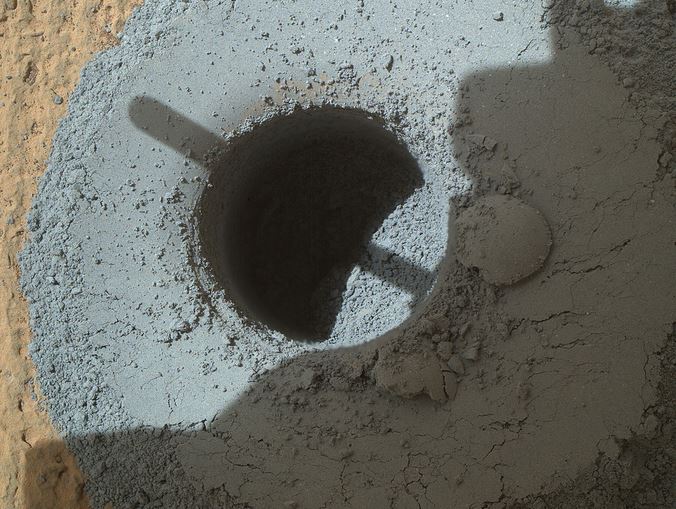The Mars Curiosity rover had a short circuit on February 27th. According to NASA’s Jet Propulsion Laboratory, the vehicle followed its programmed response by shutting down while engineers investigate the problem.
The electrical problem occurred while Curiosity’s robotic arm was moving surface powder into its sample container.
NASA engineers believe the problem will be resolved and that Curiosity will resume operations in a few days. Until then, it will remain stationary.

This view from the Mast Camera (Mastcam) on NASA’s Curiosity Mars rover shows the vehicle’s drill just after finishing a drilling operation. (Image: mars.jpl.nasa.gov/)
Jim Erickson, Curiosity Project Manager, said:
“We are running tests on the vehicle in its present configuration before we move the arm or drive. This gives us the best opportunity to determine where the short is.”
NASA says that a transient short in some of the rover’s systems would have a negligible effect on its overall operations. In others, the team could decide to restrict use of a mechanism.
Curiosity was beginning to transfer rock powder that had been collected by the drill on the arm to laboratory instruments within the vehicle.

This hole, slightly smaller than a dime, was drilled by Curiosity at a rock target called “Telegraph Peak” on February 24th. It was transferring some of the powder to its instruments when the short circuit occured. (Image: nasa.gov)
NASA’s Jet Propulsion Laboratory team wrote:
“With the drill bit pointed up and the drill’s percussion mechanism turned on, the rock powder was descending from collection grooves in the bit assembly into a chamber in the mechanism that sieves and portions the sample powder.”
The powder that was being collected came from a rock target called “Telegraph Peak”. In 2013 and 2014, the same transfer process was done without incident with samples from five previous drilling targets.
NASA’s Mars Science Laboratory Project says it is using the rover to assess ancient habitable environments and major changes in the environmental conditions in Mars.
